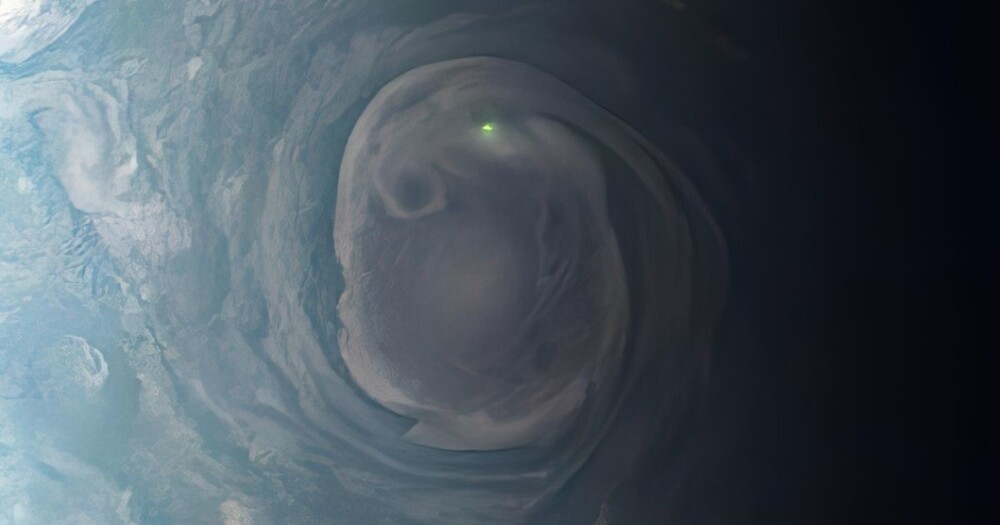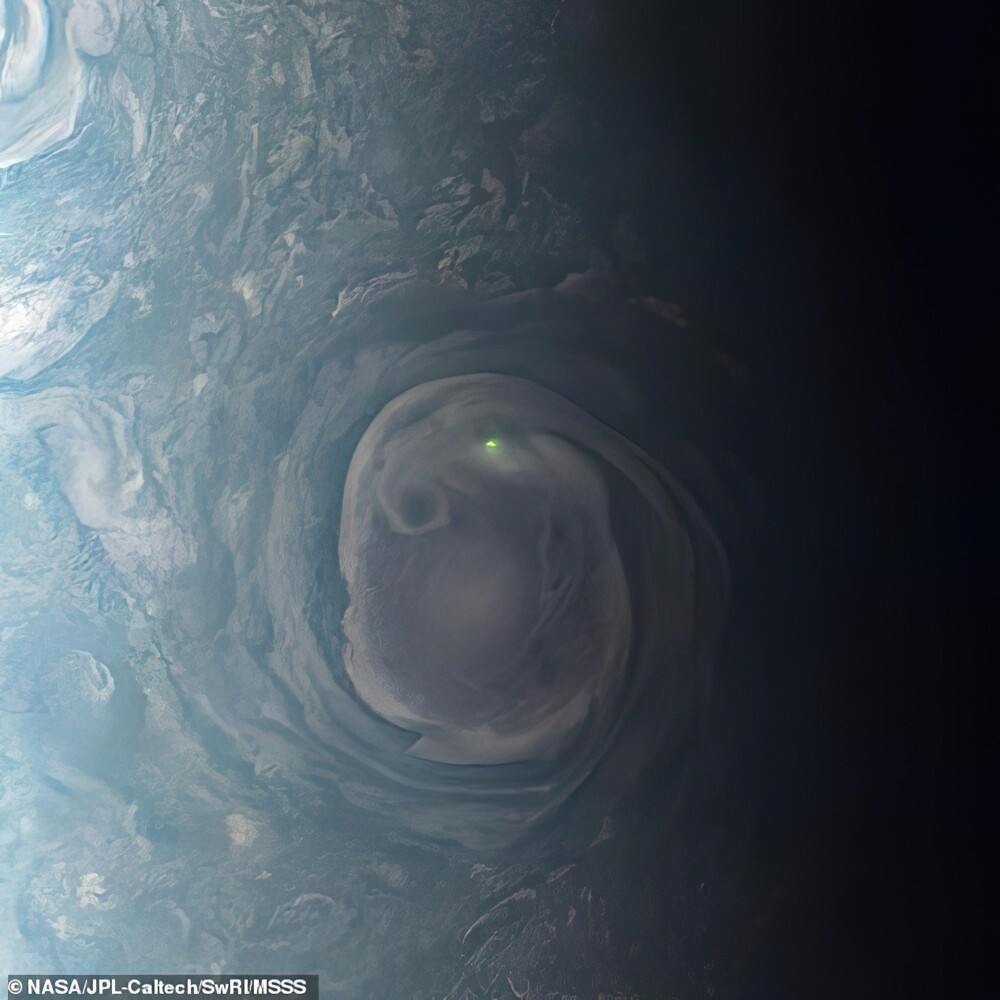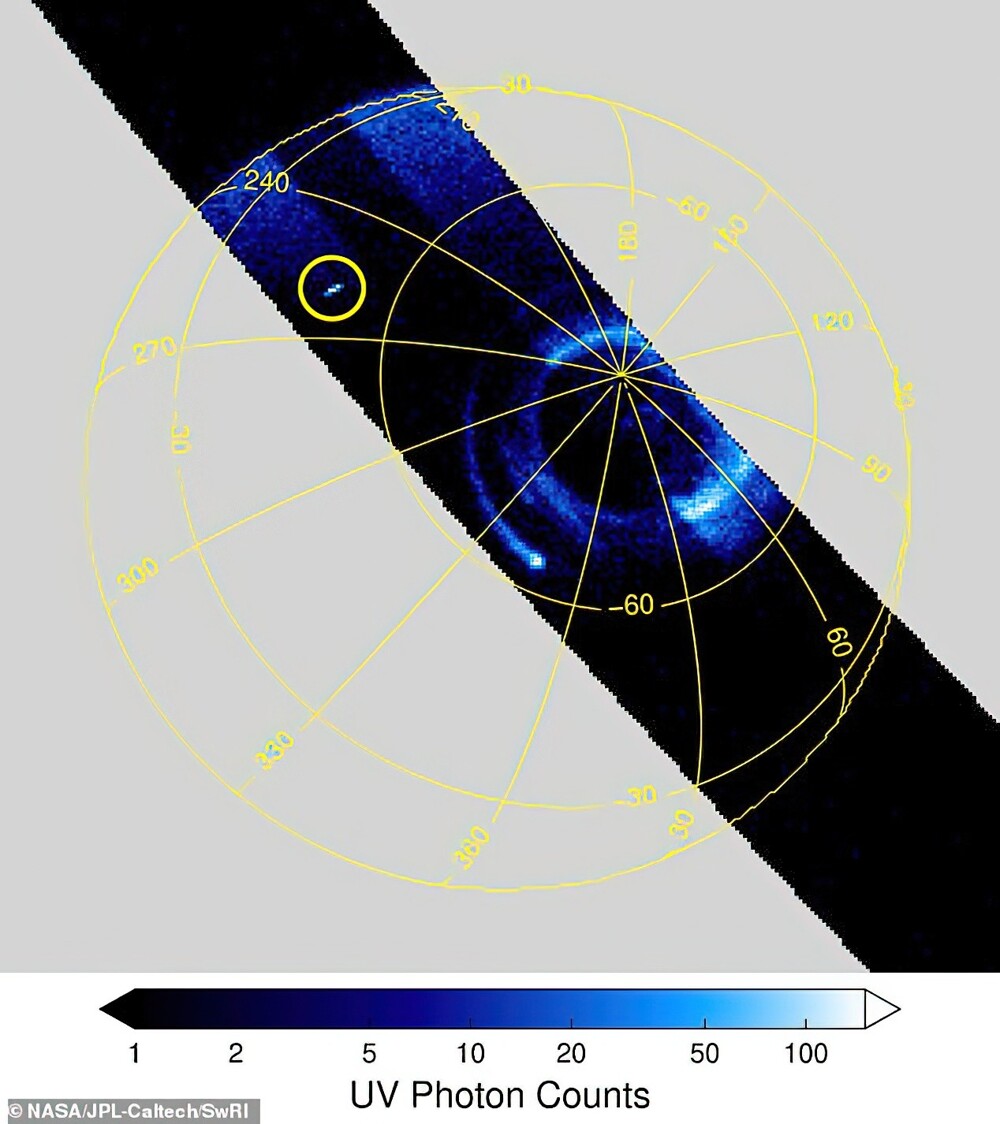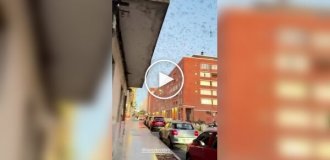The Juno spacecraft sent an image neon green flash glowing through thick swirling clouds Jupiter, as early as December 31, 2020, but published it just now. The picture was taken when the probe was at a distance of 32,000 kilometers from the cloud tops of the planet. This green dot is a powerful lightning near the gas giant's north pole. 
According to astronomers, lightning is not uncommon on Jupiter. They similar to the same natural phenomenon on Earth, but with some differences. On our planet, lightning occurs from water clouds and most often occur near the equator, while lightning on Jupiter is likely also occur in clouds containing ammonia solution, and most often they can be seen near the poles.
The picture was taken during the 31st flyby of the Juno Jupiter. Astronomer Kevin Gill processed it using additional data obtained using the Yunocam instrument on board the probe, and after this image has taken its current form. The image was released by NASA on 16 June. 
This natural phenomenon on a gas giant is called Jupiter lightning. It was first seen by a spacecraft Voyager 1 as it flew past Jupiter in March 1979.
And only when the planet was visited by the Juno apparatus, scientists determined that Jupiter's lightning is similar to the earth's lightning.
Shannon Brown of NASA's Jet Propulsion Laboratory in Pasadena, California had this to say:
No matter what planet you are on, lightning act like radio transmitters - they send out radio waves when they flicker in the sky. But before Juno, all lightning signals registered spacecraft (Voyager 1, Voyager 2, Galileo, Cassini), limited to either visual detection or kilohertz range of the radio spectrum, despite the search for signals in the megahertz range. 
Juno has been exploring Jupiter since 2016, taking new pictures mysterious planet that scientists hope will help them better understand this wonderful world.
The probe also captured electric blue "fairies" and "elves" dancing in the atmosphere of Jupiter. Such short-term light phenomena occur on Earth during a thunderstorm, but they are first observed on distant planet. 
NASA says Juno will continue its mission in the coming months. flybys near Jupiter, especially over its night side.
Add your comment
You might be interested in:





















